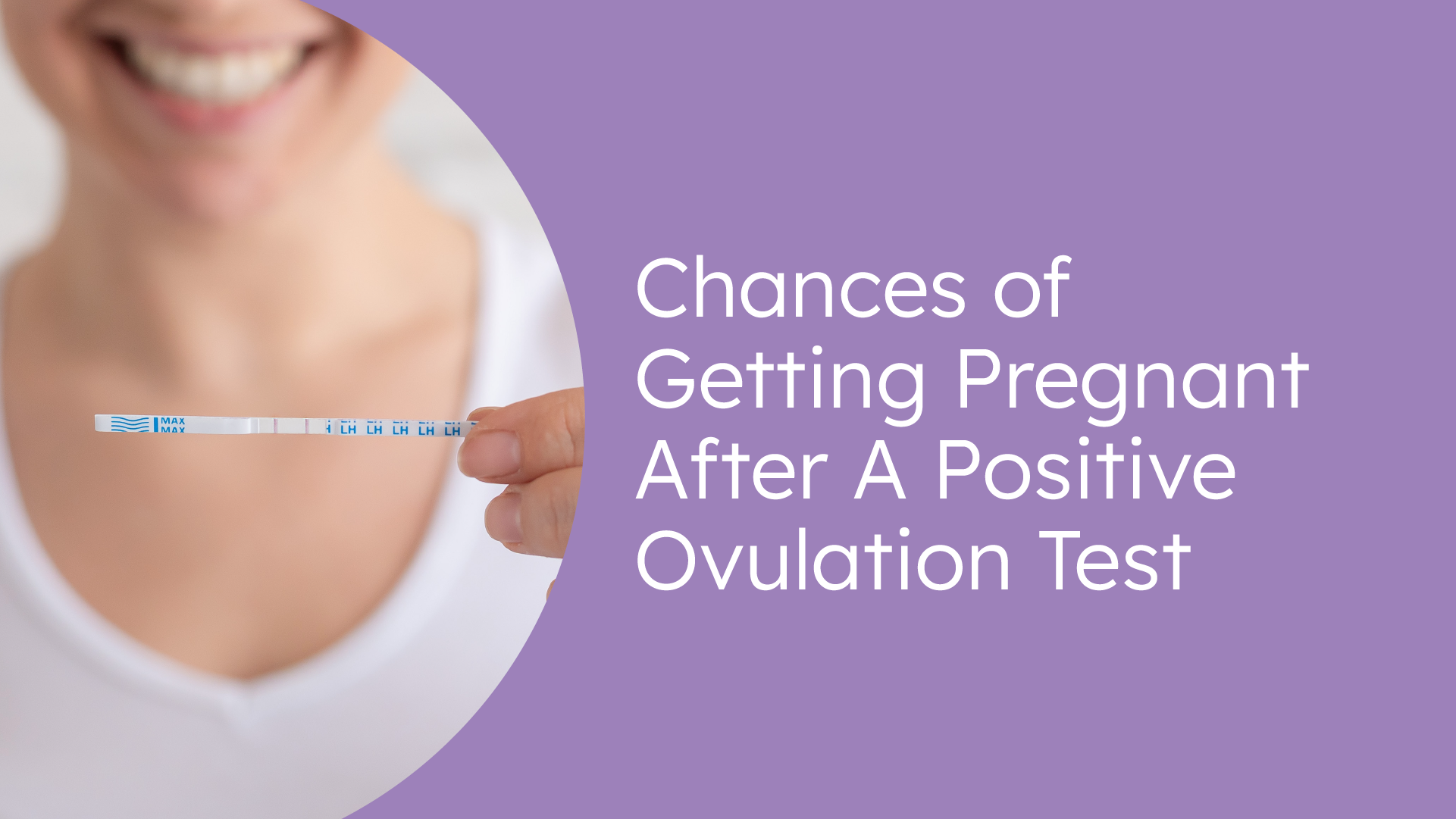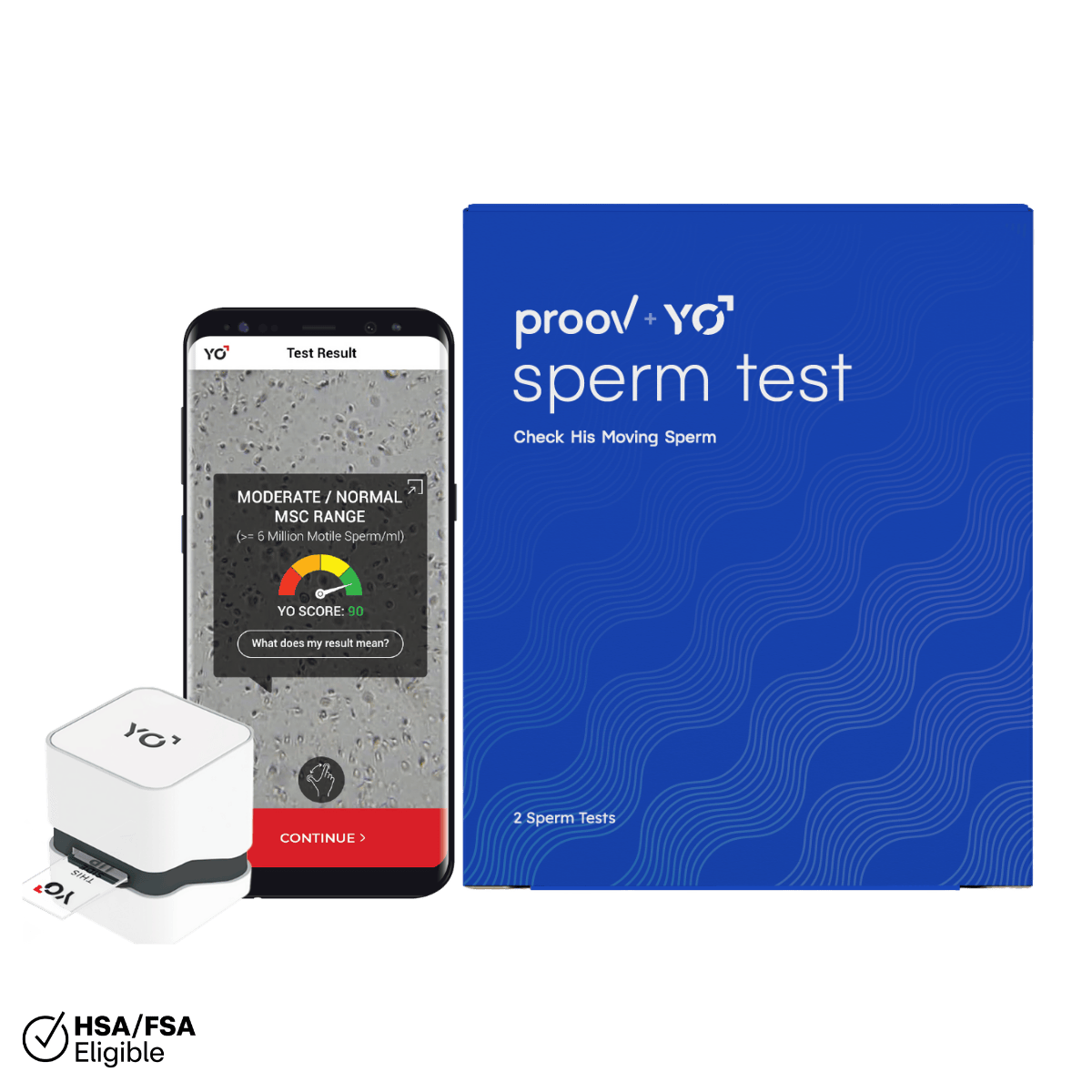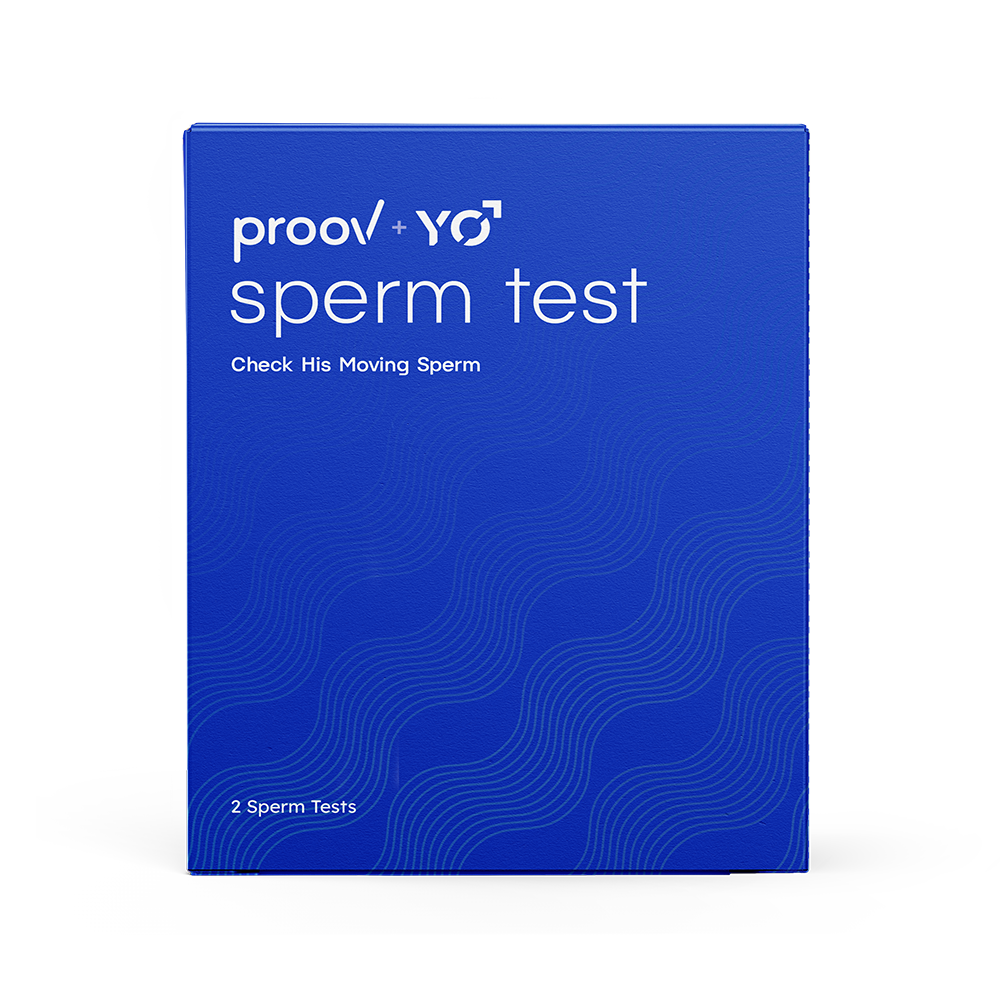Once you get a positive ovulation test, you probably know what to do next — start “trying!” But you may still be wondering what the actual chances are of getting pregnant after a positive ovulation test. Keep reading to find out!
What are ovulation tests and why should I use them?
Ovulation tests (also known as ovulation predictor kits or OPKs) are at-home urine-based hormone tests that you can use to monitor your cycle. They detect the level of LH (luteinizing hormone) in your urine in order to predict when ovulation is going to occur.
During the follicular phase — or first half of your cycle — growing follicles mature and start producing estrogen. When your estrogen reaches a certain level, it sends a signal to your pituitary gland indicating the follicles are mature and your body is ready to ovulate.
The pituitary gland then releases a surge of LH that triggers the follicle to release the egg, causing ovulation to occur.
If you are trying to conceive, you’ll want to use ovulation tests to predict when ovulation will occur and time intercourse correctly. After all, an egg is only viable for 12-24 hours after it’s released, and you have a small timeframe in which sperm can fertilize it. This is referred to as your fertile window and it is the only time in each cycle when conception is possible.
Luckily, sperm can live in a woman’s reproductive tract for up to 5 days, meaning having intercourse before ovulation can ensure sperm is waiting for the egg once it’s released. Using ovulation tests helps you time intercourse before ovulation to increase your chances at conception.
Cons of ovulation tests include:
- They are not always reliable for women with PCOS who have high LH levels throughout their cycle.
- They are less reliable for women with irregular cycles who may have several surges during the cycle.
- They are slightly more expensive than cervical mucus monitoring.
The pros, on the other hand, include:
- They are easy to use.
- They are non-invasive, meaning they can be used several days in a row, even twice a day.
- They actually show hormonal changes in your body, versus ovulation calculators which only estimate based on previous data.

When should I use ovulation tests?
If you know your cycles are regular and you ovulate more or less around the same cycle day every cycle, you can start using ovulation tests roughly 5-6 days before your next suspected ovulation date. If your cycles aren’t regular or if it is your first month testing, you may want to start as soon as your period ends.
Beginning testing earlier in your cycle ensures you won’t miss the LH surge because, regardless of what fertility myths tell us, we do not always ovulate on cycle day 14. In fact, a woman’s cycle can last anywhere from 21 to 35 days and still be considered “normal.” Your ovulation date will vary depending on the length of your cycle.
Some women may ovulate as early as cycle day 8, others as late as cycle day 20, hence the importance of tracking and detecting the fertile window, in order to increase your chances of conception!
LH levels usually surge in blood between midnight and 8 am, meaning they may not be visible in the first morning urine. Therefore you may be better off testing your second morning urine after at least a 2-3 hours hold. You can test with Proov LH tests around noon or in the afternoon, depending on your preference.
If by any chance you don’t manage to catch the surge, don’t worry! Some women have short surges that may last only several hours. In that case, you could test twice a day, noon and early evening, to make sure you don't miss it.
Depending on the type of ovulation test you are using, ovulation tests are usually considered positive when there are two identical lines or a solid smiley face. Proov Predict tests are considered positive when the test line is as dark or darker than the control line.

Depending on the type of ovulation test you are using, ovulation tests are usually considered positive when there are two identical lines or a smiley face.
What does a positive ovulation test mean?
A positive ovulation test means your LH levels are surging, and you should expect your ovulation to happen anytime between the next 12 and 36 hours. This signals the opening of your fertile window — when intercourse is most likely to result in conception.
This means it’s the time to “try!” While many people believe you should be having intercourse every day during your fertile window, we know you may not always be in the mood. That’s okay though; studies show that there isn’t a much better chance of pregnancy when having intercourse every day versus every other day during your fertile window.
What are my chances of getting pregnant after a positive ovulation test?
After getting a positive ovulation test and timing intercourse, you may be wondering what your chances are of conception. Great question!
Studies show that your chances of getting pregnant are the highest when you have intercourse starting 5 days before ovulation and the day of ovulation. This means your best shot at getting pregnant actually happens when you start having sex a few days before a positive ovulation test!
Here are some day-specific pregnancy probabilities based on the day you have intercourse:
- 3 days before ovulation: 27%
- 2 days before ovulation: 33%
- 1 day before ovulation: 41%
- Day of ovulation: 20%
- 1 day post ovulation: 8%
As you can see, your chances of pregnancy increase as you near ovulation, then significantly decrease the day of ovulation and after. This is why regularly tracking your cycle to predict your fertile window is so important!

The chances of pregnancy increase as you near ovulation, then significantly decrease the day of ovulation and after.
After I get a positive ovulation test and have intercourse, what’s next?
Ovulation tests are great tools for predicting ovulation, but they actually tell you nothing about whether or not you’ve ovulated! Confirming that ovulation happened and that it was successful gives you the best possible chance at conception.
Here are some methods to confirm ovulation:
- Basal body temperature (BBT) tracking: Before and after ovulation, BBT (your body’s lowest resting temperature) dips, then rises again. Tracking this shift can let you know if an egg was released.
-
Serum progesterone blood tests: Progesterone is the hormone released after ovulation occurs. Blood tests detect serum progesterone levels to confirm that ovulation has occurred. Note that serum progesterone levels have been shown to fluctuate throughout the day, meaning multiple draws may show a more accurate picture.
- Ultrasound: Ultrasounds are the standard reference for confirming ovulation, by detecting corpus luteum formation and changes in the endometrial lining.
However, none of these methods can confirm that ovulation was successful. Successful chances of pregnancy after ovulation refers to a successful ovulatory event in which an egg was released and PdG (progesterone metabolite) levels remained elevated for long enough to allow for the best possible chance at conception. Without enough PdG for long enough after ovulation it can be more difficult to get pregnant.
Proov PdG tests are the first and only FDA cleared PdG test kit to confirm successful ovulation at home. Testing with Proov PdG tests on days 7, 8, 9, and 10 after peak fertility (i.e. a positive LH test) can give you insight into if poor ovulation health is preventing you from conceiving.
Understanding your chances of getting pregnant after a positive ovulation test can help you better time intercourse so that you can reach your fertility goals faster!
Co-authored by: Oana Gharbi. Oana is an Infertility Patient Advocate and a certified Health and Wellness Coach. She has been empowering women for years, educating and encouraging them to advocate for themselves, make informed decisions and leave no stone unturned so that they optimize their chances of getting pregnant.












